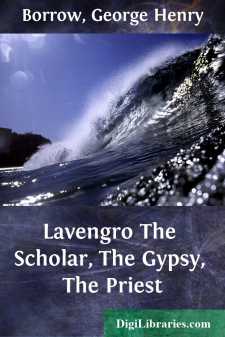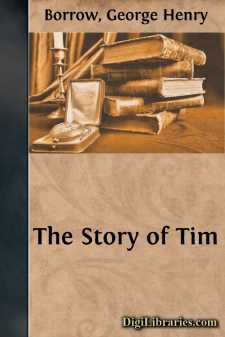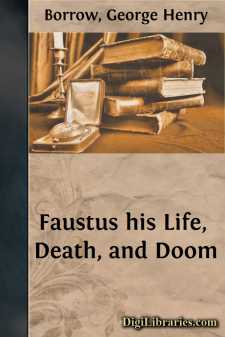Categories
- Antiques & Collectibles 13
- Architecture 36
- Art 48
- Bibles 22
- Biography & Autobiography 813
- Body, Mind & Spirit 142
- Business & Economics 28
- Children's Books 17
- Children's Fiction 14
- Computers 4
- Cooking 94
- Crafts & Hobbies 4
- Drama 346
- Education 46
- Family & Relationships 57
- Fiction 11829
- Games 19
- Gardening 17
- Health & Fitness 34
- History 1377
- House & Home 1
- Humor 147
- Juvenile Fiction 1873
- Juvenile Nonfiction 202
- Language Arts & Disciplines 88
- Law 16
- Literary Collections 686
- Literary Criticism 179
- Mathematics 13
- Medical 41
- Music 40
- Nature 179
- Non-Classifiable 1768
- Performing Arts 7
- Periodicals 1453
- Philosophy 64
- Photography 2
- Poetry 896
- Political Science 203
- Psychology 42
- Reference 154
- Religion 513
- Science 126
- Self-Help 84
- Social Science 81
- Sports & Recreation 34
- Study Aids 3
- Technology & Engineering 59
- Transportation 23
- Travel 463
- True Crime 29
The Sleeping Bard or, Visions of the World, Death, and Hell
Categories:
Description:
Excerpt
Preface.
The Sleeping Bard was originally written in the Welsh language, and was published about the year 1720. The author of it, Elis Wyn, was a clergyman of the Cambro Anglican Church, and a native of Denbighshire, in which county he passed the greater part of his life, at a place called Y las Ynys. Besides the Sleeping Bard, he wrote and published a book in Welsh, consisting of advice to Christian Professors. The above scanty details comprise all that is known of Elis Wyn. Both his works have enjoyed, and still enjoy, considerable popularity in Wales.
The Sleeping Bard, though a highly remarkable, is not exactly entitled to the appellation of an original work. There are in the Spanish language certain pieces by Francisco Quevedo, called “Visions or Discourses;” the principal ones being “The Vision of the Carcases, the Sties of Pluto, and the Inside of the World Disclosed; The Visit of the Gayeties, and the Intermeddler, the Duenna and the Informer.” With all these the Visions of Elis Wyn have more or less connection. The idea of the Vision of the World, was clearly taken from the Interior of the World Disclosed; the idea of the Vision of Death, from the Vision of the Carcases; that of the Vision of Hell, from the Sties of Pluto; whilst many characters and scenes in the three parts, into which the work of Elis Wyn is divided, are taken either from the Visit of the Gayeties, the Intermeddler, or others of Quevedo’s Visions; for example Rhywun, or Somebody, who in the Vision of Death makes the humorous complaint, that so much of the villainy and scandal of the world is attributed to him, is neither more nor less than Quevedo’s Juan de la Encina, or Jack o’ the Oak, who in the Visit of the Gayeties, is made to speak somewhat after the following fashion:—
“O ye living people, spawn of Satan that ye are! what is the reason that ye cannot let me be at rest now that I am dead, and all is over with me? What have I done to you? What have I done to cause you to defame me in every thing, who have a hand in nothing, and to blame me for that of which I am entirely ignorant?” “Who are you?” said I with a timorous bow, “for I really do not understand you.” “I am,” said he, “the unfortunate Juan de la Encina, whom, notwithstanding I have been here many years, ye mix up with all the follies which ye do and say during your lives; for all your lives long, whenever you hear of an absurdity, or commit one, you are in the habit of saying, ‘Juan de la Encina could not have acted more like a fool;’ or, ‘that is one of the follies of Juan de la Encina.’ I would have you know that all you men, when you say or do foolish things, are Juan de la Encina; for this appellation of Encina, seems wide enough to cover all the absurdities of the world.”
Nevertheless, though there is a considerable amount of what is Quevedo’s in the Visions of Elis Wyn, there is a vast deal in them which strictly belongs to the Welshman. Upon the whole, the Cambrian work is superior to the Spanish. There is more unity of purpose in it, and it is far less encumbered with useless matter. In reading Quevedo’s Visions, it is frequently difficult to guess what the writer is aiming at; not so whilst perusing those of Elis Wyn. It is always clear enough, that the Welshman is either lashing the follies or vices of the world, showing the certainty of death, or endeavouring to keep people from Hell, by conveying to them an idea of the torments to which the guilty are subjected in a future state.
Whether Elis Wyn had ever read the Visions of Quevedo in their original language, it is impossible to say; the probability however is, that he was acquainted with them through the medium of an English translation, which was published in London about the beginning of the eighteenth century; of the merits of that translation the present writer can say nothing, as it has never come to his hand: he cannot however help observing, that a person who would translate the Visions of Quevedo, and certain other writings of his, should be something more than a fair Spanish scholar, and a good master of the language into which he would render them, as they abound not only with idiomatic phrases, but terms of cant or GermanÃa, which are as unintelligible as Greek or Arabic to the greater part of the Spaniards themselves.
The following translation of the Sleeping Bard has long existed in manuscript. It was made by the writer of these lines in the year 1830, at the request of a little Welsh bookseller of his acquaintance, who resided in the rather unfashionable neighbourhood of Smithfield, and who entertained an opinion that a translation of the work of Elis Wyn, would enjoy a great sale both in England and Wales. On the eve of committing it to the press however, the Cambrian Briton felt his small heart give way within him: “Were I to print it,” said he, “I should be ruined; the terrible descriptions of vice and torment, would frighten the genteel part of the English public out of its wits, and I should to a certainty be prosecuted by Sir James Scarlett. I am much obliged to you, for the trouble you have given yourself on my account—but Myn Diawl! I had no idea till I had read him in English, that Elis Wyn had been such a terrible fellow.”
Yet there is no harm in the book. It is true that the Author is any thing but mincing in his expressions and descriptions, but there is nothing in the Sleeping Bard which can give offence to any but the over fastidious. There is a great deal of squeamish nonsense in the world; let us hope however that there is not so much as there was. Indeed can we doubt that such folly is on the decline, when we find Albemarle Street in ’60, willing to publish a harmless but plain speaking book which Smithfield shrank from in ’30?
...











